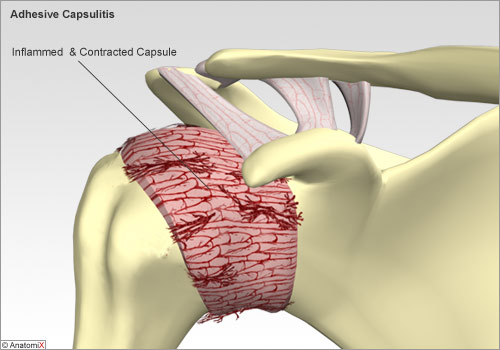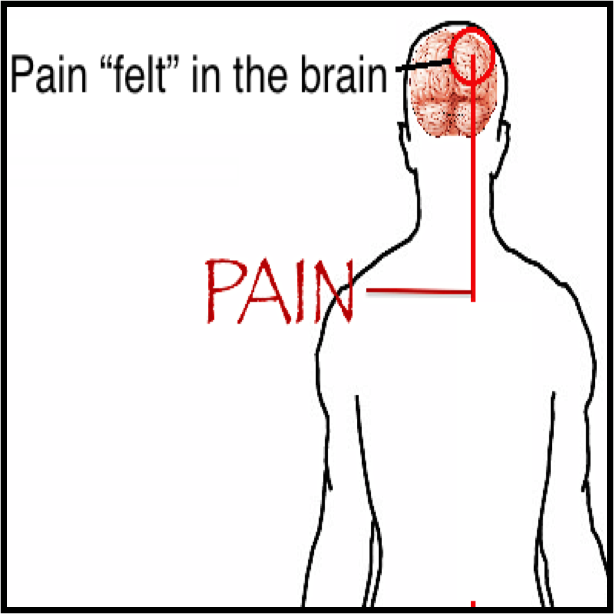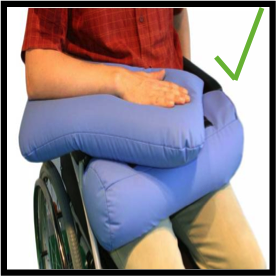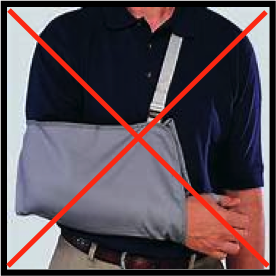Shoulder Pain
What causes shoulder pain after a stroke?
Shoulder pain after a stroke can have many different causes. It is extremely important to know the cause of the shoulder pain. Pain can come from damage or injury to the shoulder joint. Pain can also occur when damage has occured to the “pain centers” in the brain and from “non-use” of the arm effect by the stroke. Here is a list of the most common causes and management of shoulder pain following stroke.


Shoulder Subluxation
Pain can occur if the weak shoulder becomes subluxed (partially dislocated) after a stroke. When the shoulder is weak, it becomes extremely unstable. In some cases, the weight of the arm can cause the arm to separate from the the shoulder socket. In most cases, this type of injury is preventable by protecting the shoulder joint and educating care takers on how to assist a patient without pulling on the effected arm.
Adhesive Capsulitis or “Frozen Shoulder”
Another complication that can occur in the shoulder after a stroke is adhesive capsulitis. If the arm stays in one position, sometimes the structures around the joint with “freeze up”. This is where the term frozen shoulder comes from. The capsule around the shoulder joint shortens and will not allow the shoulder to move. If this occurs, the patient usually experiences the most pain with shoulder movement.

Central Neuropathic Pain
A stroke can sometimes effect the areas of the brain that interpret pain. When this happens, the brain may perceive certain sensations as painful.
Complex Regional Pain Syndrome
Complex regional pain syndrome is a condition that occurs when nerves can become hypersensitive due to “non-use” of the arm. This condition aligns with the old saying “if you don’t use it, you lose it”. This can sometimes happen if the patient experiences pain in the arm early on in the recovery. This sends a message to the brain that “movement causes pain”. Once the brain and the patient associate movement with pain, they may go to great lengths prevent the arm from being moved. In sever cases, they may even stop allowing any kind of touch on the arm. If this continues, the arm will become intolerant to any kind of touch or movement.
How Do I Know What is Causing My Shoulder Pain?
A doctor is the medical professional who diagnoses pain syndromes. A physical therapist may also be able to help identify the cause of the pain. The best case is when the therapist and the medical doctor stay in close communication about your care.
What is the best treatment for my shoulder pain?
Figuring out what is causing the shoulder pain is the first step. Neurologic pain and orthopaedic pain will need to be treated differently for the best result. This will include a combination of physical therapy, and medication. It is helpful for your physical therapist and your physician to talk to each other about your shoulder pain. A physical therapist will have valuable information about how your shoulder is moving, what triggers your pain, and what positions and movements help the pain. This can help the physician in diagnosing the pain and recommending the best treatment options.
Managing Stroke Shoulder Pain
Positioning the arm



Positioning is extremely important. When the shoulder is weak, the weight of the arm will cause the arm to sublux (partially dislocate) from the shoulder joint. In addition to causing pain, shoulder subluxation can damage the muscles making it harder to recover arm movement. The important things to remember when thinking about positioning is to make sure the arm is supported and the lower arm is pointing forward. Medifab has created this positioning system for sale. Pillows can also work to make sure the arm stays in the right position. When Standing, the Givrmorh sling allows the arm to move, to allow for a normal walking pattern while also supporting the weight of the arm.
Slings similar to this don’t allow the arm to move in a normal fashion. This type of sling may also cause the pectoralis muscle and the biceps muscle to become tight which are already at risk for becoming tight after a stroke. This may make voluntary movement more difficult
Passive Range of Motions Exercises
When the arm stays in the same position for a long time, it may become painful when it is touched or moved to a different position. When the arm is to weak to move, it is important to do passive range of motion exercises. This may help to prevent pain. This will also make it easier to move when working on shoulder strengthening exercises

Instruction for the patient: Lay on your back in a comfortable position. Try to watch the arm as it moves. This sometimes helps the brain to connect with the movement
Caregiver Instructions:Support the upper arm with one hand and the wrist with the other hand. Try to feel the arm relax before starting any movement. Make sure you do not pull on the arm. Instead think about letting the arm relax in your hands. Once the arm feels like it has relaxed, gently move the arm to the side away from the body. Make sure the shoulder is not moving up toward the ear. you want to focus on moving the part of the arm that is in your hands. Next, bring the arm back to the starting position close to the side of the body, positioning the arm so the thumb is facing up toward the ceiling and the elbow is pointing down toward the floor (The elbow should point straight down and the crease in the ben of the elbow shoulder be pointing toward the ceiling) Now, gently move the arm up toward the ceiling. Stop the movement as soon as your feel resistance or the patient complains of pain
Important: The shoulder is extremely fragile. Make sure you move the arm slow and you stop as soon as your feel resistance.
